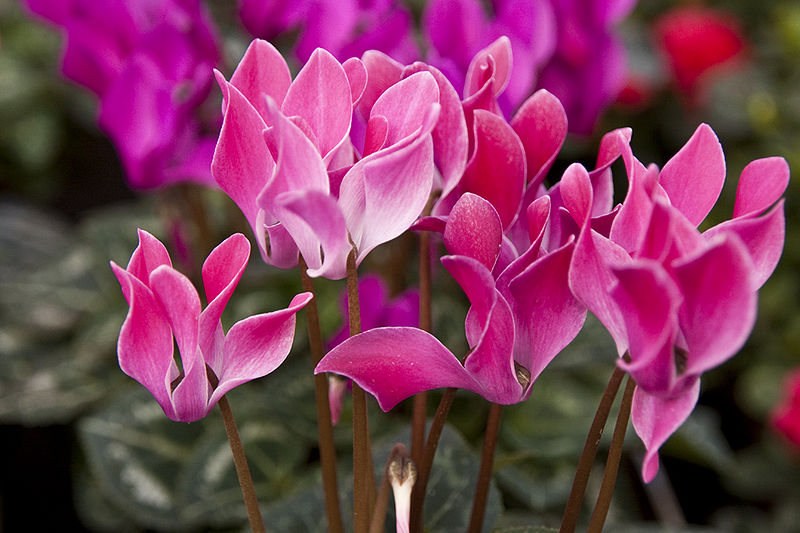| |
Cyclamen (Cyclamen Europeum)

|
Cyclamen has ivy like leaves, purplish, varied, with some spots on the top and white underneath. The stem is about four inches long and bare. On top are the flowers, red, rose like. The root is black, squashed, similar to a turnip.
People use the root and root-like stem (rhizome) for medicine.
Cyclamen Europeum, a plant belonging to the Primulaceae family, forms the basis of the homeopathic remedy cyclamen. This species is also known by several other names, such as ivy-leafed cyclamen, groundbread, sowbread and swinebread. This plant is native to the regions having temperate climatic conditions and is found growing in North Africa, North America and central regions of Europe. The woodlands and shady and humid gardens are ideal for the plant to thrive as well as flourish. Many people also grow this plant indoors as decorative items and it is valued for its multi-colored and veined leaves as well as the vivid pastel hued flowers whose petals fold backward. The tuberous corms of the plant are used to prepare the homeopathic remedy cyclamen, which is believed to be an effective medicine for treating several health conditions, such as stomach disorders, vision problems, anxiety, nervousness and even menstrual problems.
It may often be somewhat tricky to grow the cyclamen europeum plant in the garden. Nevertheless, when this plant is grown in the gardens, it lights up the entire area owing to its attractive leaves and flowers. In fact, the multi-colored and veined leaves as well as the pastel hued flowers of Cyclamen europeum have made this plant popular among gardeners. This plant has the aptitude to grow and thrive in an assortment of climatic conditions (temperatures ranging from 10°F (-12°C) to as high as 100°F (37.7°C). Light, loamy dirt is considered to be the most suitable soil for this plant to grow. However, Cyclamen europeum will only flourish provided that the plant is placed in a shady area where the soil is moist - neither drenched, nor extremely sandy or arid. In addition, the corm as well as the tuberous root of Cyclamen europeum is susceptible to decay and mildew when the plant is grown in soil that is excessively moist as well as when grown indoors. In such situations as well as when the plant is grown in a dark room, the leaves of Cyclamen europeum have a tendency to wilt and become yellowish.
Occasionally, the Cyclamen europeum plant is used to prepare homeopathic medicine. In effect, plant extracts obtained by a process known as heat distillation as well as the dehydrated and pulverized corms of the plant are both used to prepare the homeopathic remedy cyclamen. The medicine is available in the form of pills as well as powder from the online pharmacies selling homeopathic medicines as well as local homeopathic medicine practitioners. Here is a word of caution. It is not advisable to attempt to make a home remedy using the Cyclamen europeum plant since it may result in potential toxicity.
The homeopathic remedy cyclamen is primarily used to treat depression, sorrow, headaches, migraines, light-headedness, burning feelings in the heels, emotional problems, anxiety,
People using this homeopathic remedy prepared from Cyclamen need to strictly follow physician's recommended dosage. If taken in large doses, cyclamen has the potential to result in fierce purging and vomiting.
Cyclamen essential oil and absolute are also used in perfumery for its unique fragrance.
Disclaimer: The information presented herein is intended for educational purposes only. These statements have not been evaluated by the FDA and are not intended to diagnose, cure, treat or prevent disease. Individual results may vary, and before using any supplements, it is always advisable to consult with your own health care provider.
|
|


















